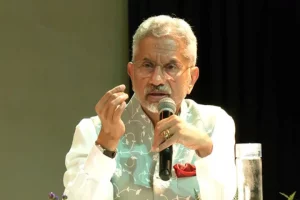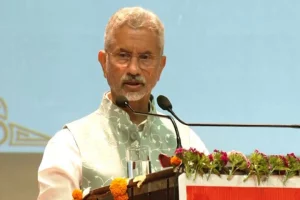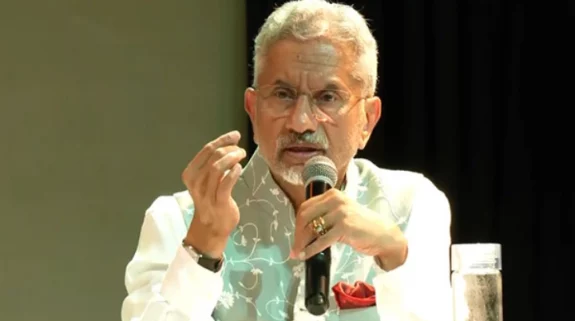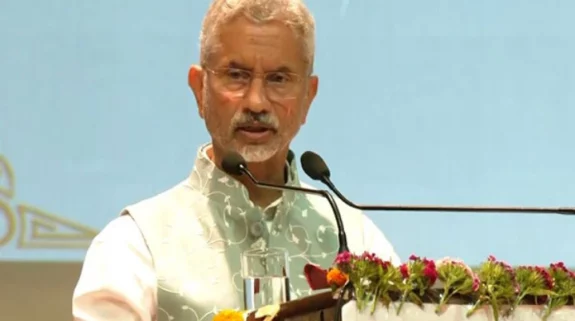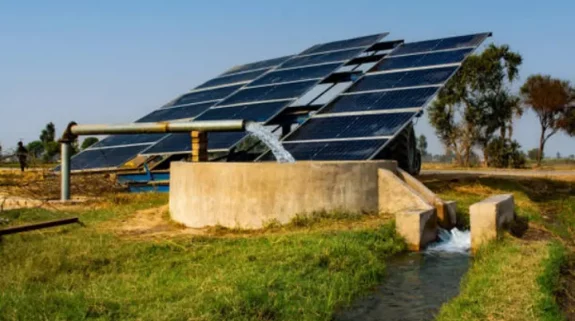The dream of uninterrupted 24×7 power supply in Jammu and Kashmir is expected to be realised in the near future as the memorandum of understanding (MoUs), involving an investment of Rs 35,000 crore, was signed between the National Hydroelectric Power Corporation (NHPC), the UT’s Power Development Department and the J&K Power Development Corporation (PDC) in Jammu on Sunday.
This initiative aims not only to make Jammu and Kashmir self-sufficient in electric power but would also generate surplus electricity to contribute to the Northern grid. The projects will also create job opportunities for the local people.
The MoUs were signed for commissioning of the much awaited mega hydroelectric projects including 850-mw Ratle HEP and 930-mw Kirthai-II HEP, besides execution of the long pending Sawalkot HEP
(1856 mw), Uri-I Stage-II (240 mw) and Dulhasti Stage-II (258 mw).
Union Minister of State for Power Raj Kumar Singh, J&K Lieutenant Governor Manoj Sinha and MoS in Prime Minister’s Office Jitendra Singh were present on the occasion which also saw as many as 19
important projects of the PDD, aimed at greater generation, efficient transmission and better distribution of power supply in J&K being inaugurated.
Raj Kumar Singh assured every support to J&K for various reforms in the power sector. “Hydroelectric potential has successfully ushered an era of development in various states, including Sikkim & Himachal
Pradesh. J&K should replicate the model, “ Singh said.
“The local people will be trained and given employment in NHPC ventures, besides NHPC will see the development of small hydro projects also. We have to do our bit of duty to see electricity
reaching every household 24×7,” the minister added.
LG Manoj Sinha observed that the MoUs would attract an investment worth Rs 35,000 crore and ensure the region’s energy security and 24-hour power supply to the people in the Union Territory. “J&K is taking a quantum leap from being power deficient to becoming a power surplus in the next four years. For uninterrupted power supply, this is the most significant move by the J&K government”, said the Lt Governor.
As per the provisions of these MoUs, the projects would be handed over to J&K after 40 years of commercial operation which was not provided in case of earlier projects allotted to the NHPC, he pointed out.
Speaking on tapping the full potential of hydro energy, the Lt Governor observed that the government’s vision was to effectively harness hydro energy resources of J&K with a goal to double the energy
generation by 2024 and also to prepare a strategy for efficiency through policies, monitoring mechanism to ensure energy security for economic and social benefits. Hydroelectricity would be a major
contributor to the world’s energy security in view of the global shift towards sustainable energy and reduction of carbon emissions. Our efforts are steering Jammu & Kashmir towards its energy sufficient and empowered future, he added.
The Lt Governor said that numerous hydro resources were capable of generating 14,867 mw power but their potential had not been fully exploited. Not more than 3,504 mw was being generated. The works
started now would ensure additional generation of 3,498 mw in the next three to four years. “The potential, which was achieved in 70 years, would now be doubled within the next four years only”, Sinha asserted.
“J&K’s journey from a power-deficit to a power-surplus region could only be realised with vision and planning. Entire overhaul is being made possible with the full support of the Central Government”, Sinha added.
Out of the two agreements, the NHPC would work in association with the UT administration at the first and the languishing Sawalkot project would be handed over to the NHPC for completion. The project had been perpetually postponed since its conception in 1984 and was expected to generate 1,856 mw of power, he added.
“Jammu & Kashmir was deliberately prevented from attracting investments and despite abundant potential for power generation, its energy needs were not addressed. With the execution of new power
projects, a number of other employment avenues would be generated for the locals. In addition to the power generation, strengthening its distribution and transmission infrastructure would also receive our
equal efforts,” the LG maintained..






